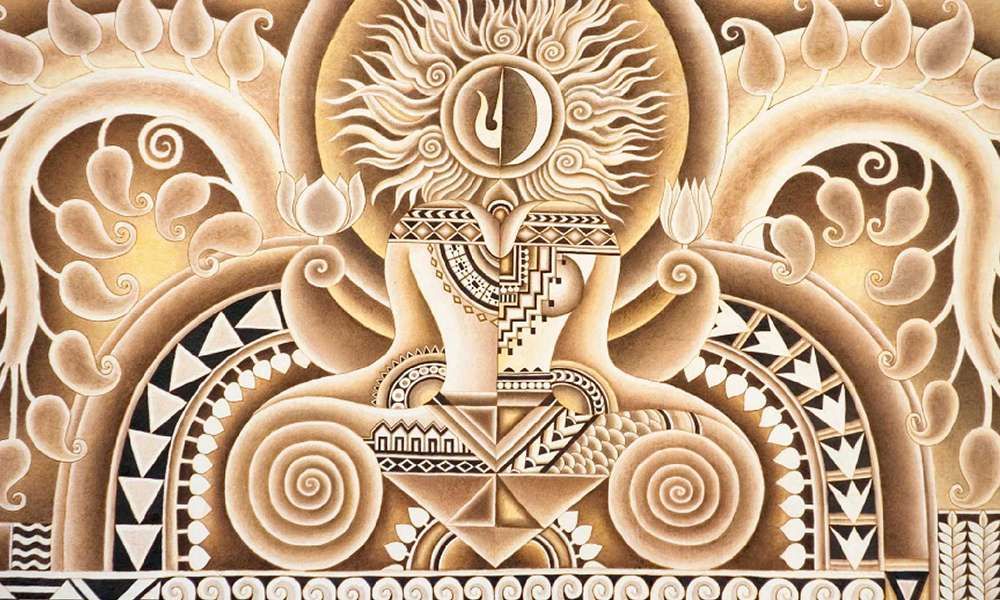The Three Fundamental Nadis - Ida, Pingala and Sushumna
Sadhguru speaks about the three fundamental nadis or energy pathways in the system, the Ida, Pingala and Sushumna.

Sadhguru: Within the spine, if you know its physical construction, you will know there are two holes on either side of the spine which are like conduit pipes for all the nerves to pass. This is the Ida and the Pingala, the left and the right channels.
In the Pranamayakosha or the energy body, there are 72,000 nadis. The 72,000 nadis spring from three basic nadis – the left, the right and the central – the Ida, Pingala, and Sushumna. The word “nadi” does not mean nerve. Nadis are pathways or channels of prana in the system. These 72,000 nadis don’t have a physical manifestation. In the sense, if you cut the body and look in, you will not find them. But as you become more aware, you will notice the energy is not moving at random, it is moving in established pathways. There are 72,000 different ways in which the energy or prana moves.
Subscribe
The Ida and Pingala represent the basic duality in the existence. It is this duality which we traditionally personify as Shiva and Shakti. Or you can simply call it masculine and feminine, or it can be the logical and the intuitive aspect of you. It is based on this that life is created. Without these two dualities, life wouldn’t exist as it does right now. In the beginning, everything is primordial, there is no duality. But once creation happens, there is duality.
When I say masculine and feminine, I am not talking in terms of sex – about being male or female – but in terms of certain qualities in nature. Certain qualities in nature have been identified as masculine. Certain other qualities have been identified as feminine. You may be a man, but if your Ida is more pronounced, the feminine may be dominant in you. You may be a woman, but if your Pingala is more pronounced, the masculine may be dominant in you.
Bringing a balance between the Ida and Pingala will make you effective in the world, it will make you handle life aspects well. Most people live and die in Ida and Pingala; Sushumna, the central space, remains dormant. But Sushumna is the most significant aspect of human physiology. Only when energies enter into Sushumna, life really begins.
Vairagya
Fundamentally, Sushumna is attribute-less, it has no quality of its own. It is like empty space. If there is empty space, you can create anything you want. Once energies enter into Sushumna, we say you attain to Vairagya. “Raga,” means color. “Vairag,” means no color, you have become transparent. If you have become transparent, if what is behind you is red, you turn red too. If what is behind you is blue, you turn blue too. If what is behind you is yellow, you turn yellow too. You are unprejudiced. Wherever you are, you become a part of that, but nothing sticks to you. Only if you are like this, only if you are in a state of Vairag, then you will dare to explore all dimensions of life when you live here.
Right now, you are reasonably balanced, but if for some reason the outside situation goes crazy, you will also go crazy in reaction to that because that is the nature of Ida and Pingala. It is reactive to what is outside. But once the energies enter into Sushumna, you attain to a new kind of balance, an inner balance where whatever happens outside, there is a certain space within you which never gets disturbed, which is never in any kind of turmoil, which cannot be touched by the outside situations. Only if you create this stable situation within yourself, you will dare to scale the peaks of consciousness.
Editor’s Note: Excerpted from Sadhguru’s discourse at the Isha Hatha Yoga School’s 21-week Hatha Yoga Teacher Training program. The program offers an unparalleled opportunity to acquire a profound understanding of the yogic system and the proficiency to teach Hatha Yoga. The next 21-week session begins on July 16 to Dec 11, 2019. For more information, visit www.ishahathayoga.com or mail info@ishahatayoga.com



